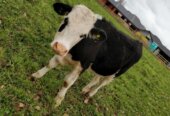
From left, Alex Jenkins, Lynsey Satherley and Hope Trebes on the new artificial track in Cambridge.
The country’s first synthetic racetrack will host a full meeting at Cambridge in May.
Cambridge Jockey Club opened the new track last year and it has been given the thumbs up by trainers.
The 30,000-plus square metre polytrack surface is one of three approved for the country – two more will be laid at Awapuni and Riccarton.
The $12.75m Cambridge project started almost 12 months ago to the week – and the club was able to shake off the full impact of the Covid lockdown by getting a concession to bring the team which mixes the ingredients back from Australia to go through a quarantine period.
Jockey club chief Mark Fraser-Campin said there was still work to do on facilities at the track – there are plans for a small two-storey building with grandstand facilities – but that had been put back by Covid. Facilities for jockeys and car parking will be ready by the first race day.
“What we will do is put on a series of meetings in the middle of winter from May to October, when weather can play havoc with grass tracks,” he said.
In winter other clubs with grass tracks could move their meetings to Cambridge if needed, rather than announce a cancellation.
The new track is drawing trainers and horses into Cambridge. A stream of floats bring established and rising stars in throughout the week.
It’s estimated about 1200 horses are in training at Cambridge – and the industry and infrastructure around it contributes millions of dollars to the region’s economy.
Cambridge’s racing fraternity would be in the news each November a generation ago as they produced Melbourne Cup contenders – today the industry is considerably bigger.
Nationally, it is estimated the industry ploughs $1.6 billion into the New Zealand economy each year, a fact which encouraged the Government to support the Cambridge project.
Trainer Shawn Ritchie – who lives within shouting distance of the new track – is a fan.
“From a trainer’s perspective it is consistent – it bounces back – you can work 500 horses on it, and it looks as good as when the first went round.”
He said it was also beneficial for older horses and those with back issues or greasy heel – a dermatitis condition.
He says the synthetic track was needed and while it hasn’t been tested in winter, he expects it to be very good.









